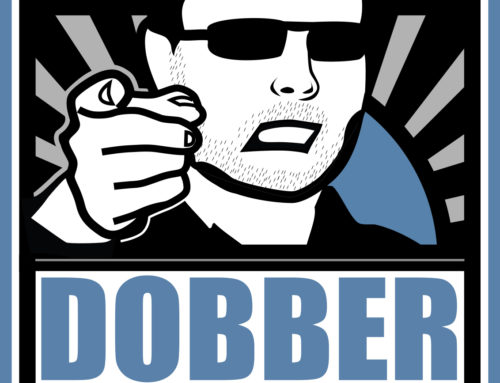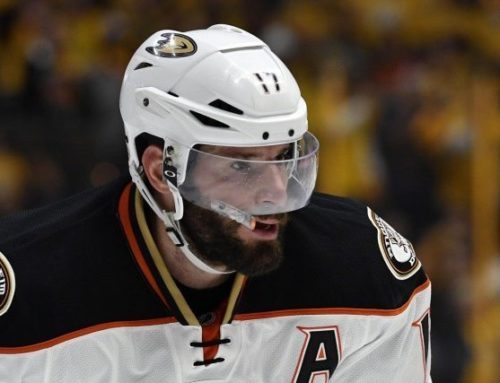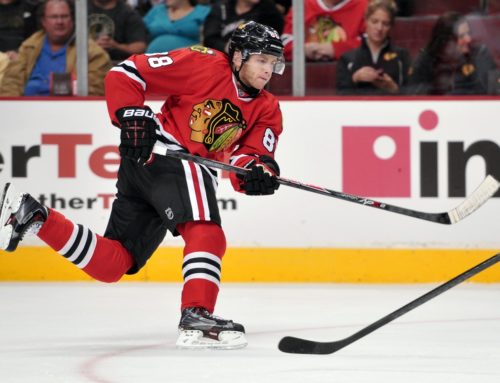Is Wider Better?
Justin Goldman
2007-12-10

It would be hard to find another goalie in the league more valuable to his team right now than Henrik Lundqvist. Yes, the king of concentration has put together numerous game-saving performances to keep his team right in the mix atop the Atlantic Division. With five shutouts and a 15-11-1 record, he’s already experienced a season in which he’s enjoyed both the sweet, sweet highs and the lonely lows…and it’s only December 10.
Most recently, Lundqvist made up for bad home losses against Toronto and Carolina with a tremendous 1-0 shutout over New Jersey on Sunday afternoon. Yeah, he only made 17 saves, but when you’re looking down at a goaltender that has 81 more shutouts than you, things can get pretty intimidating. Ironically enough, Henrik seems to play his best hockey against Brodeur’s Devils, so it wasn’t that much of a surprise.
But there’s something really unique about Lundqvist other than his “big-game” reputation. There’s a feature about his stance – a certain characteristic – that sets him apart from all other NHL goaltenders and it’s very obvious from the naked eye. I speak, of course, of his extremely wide stance. Many call it unorthodox, awkward or even outright ridiculous, yet his success proves there’s a method to his madness. But is this method, recently coined as a “wide-fly” stance, a more successful style than the common and dominant butterfly? Let’s quickly break it down, boys.
Just take one look at Lundqvist when the puck is in his zone and you’ll notice his incredibly low, wide stance. Although it looks difficult to maneuver like this, he actually moves VERY well around the crease. Yes, most goalies will get much lower and wider right before a shot is taken, but in terms of the average stance, it’s still much lower than anyone else’s.
The main reason a wide stance is successful is because it speeds up the butterfly movement. The wider the stance, the closer your knees are to the ice. The more your legs straighten up, the further away they are, and thus the longer it will take for them to hit the ice. But in order to stay consistent with this stance throughout an entire game, Henrik has a very sharp edge on his skates, probably around 3/8ths, which is actually another positive about the wide-fly stance. Sharper skates allow goalies to maintain quicker in-crease movements and also allow for them to set up with much better balance. This results in fewer bad rebounds and better puck and body control.
A negative aspect to the wide-fly is that being lower to the ice ultimately shows more space at the top of the net and over the shoulders, which is a prime scoring area for snipers and deflection artists. In fact, many of the goals Lundqvist allows go right over his shoulders, especially when he is caught leaning slightly forward in his wide-fly stance.
And yes, there are goalies that combine both stances. Niklas Backstrom, Antero Niittymaki and Pascal Leclaire are just a few that like to get low and wide on shots towards the middle of the ice are, but won’t stay like that for an entire game. They basically draw an upside down triangle starting at the middle of the net up to the blue line and figure that anything inside of the triangle calls for a wide-fly stance, but will lessen as the play moves away from the slot area. Anything outside of that prime scoring area and they will play in a more upright butterfly stance.
Another aspect of Lundqvist’s unique stance is his leg pads. There have been numerous arguments regarding his pads, mainly because they look way bigger than the maximum regulation height of 38 inches. Of course they’re legal, but one area of his pads that raise eyebrows is the thigh rise. They travel so far up his thighs that you can’t see any area of his pants below the waist! So what does this do for a goaltender? It completely closes the five-hole as soon as their knees touch the ice, so there’s much less effort needed to pull their legs together. To me, it’s as close to cheating as you can get without stuffing your pants with high-density foam and extra padding.
To his defense, the current design of NHL-quality leg pads actually allows for the full face of the pad to rotate and be perpendicular to the ice, which maximizes the blocking area. Plus all NHL goalies have the same opportunity to take advantage of this “thigh-rise” feature, but then again Lundqvist’s TPS Response pads were custom made to include a much higher thigh-rise (like five or six inches). Since he incorporates the wide-fly stance and has such massive thigh rises, it always forces the shooter to go high to score. It’s still considered a “butterfly” motion when he drops, as the mechanics are the same, but it’s really the design of the leg pad that achieves this dominance down low more than anything else.
So is wider better? Well, as I always say, each goalie is totally unique, so what works for Lundqvist does not work for any other goalie. Therefore I would say it’s a very successful style for him. The proof is in his great numbers and game-to-game saves. I wouldn’t be surprised, however, if the next restriction on goalie pads has to do with the height of the thigh-rise.





 PHI
PHI WSH
WSH FLA
FLA MIN
MIN N.J
N.J T.B
T.B BUF
BUF DAL
DAL MTL
MTL NYR
NYR CBJ
CBJ TOR
TOR NYI
NYI DET
DET STL
STL WPG
WPG CHI
CHI VAN
VAN SEA
SEA COL
COL NSH
NSH BOS
BOS EDM
EDM CAR
CAR UTA
UTA OTT
OTT CGY
CGY PIT
PIT ANA
ANA S.J
S.J VGK
VGK L.A
L.A
